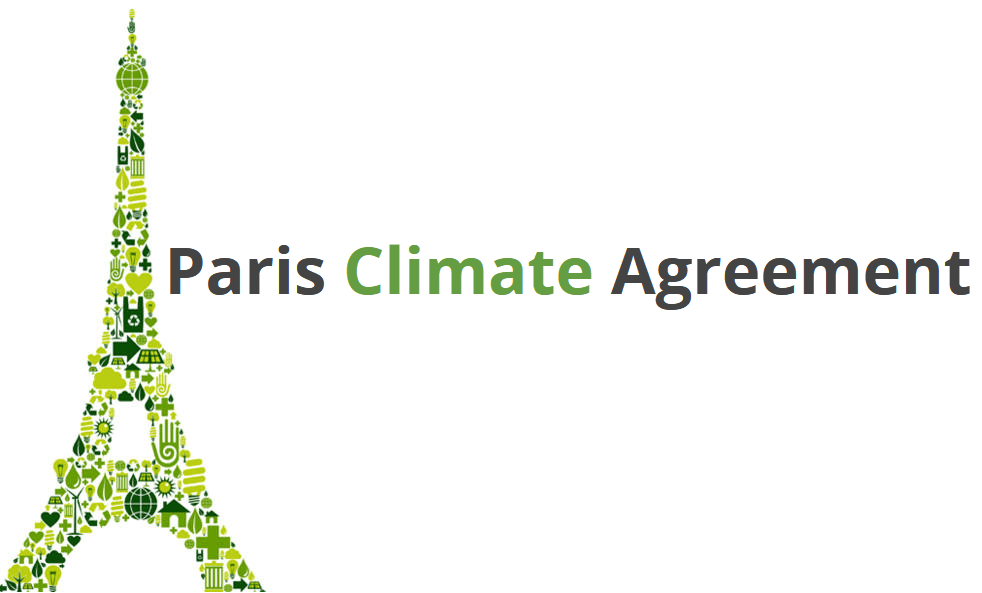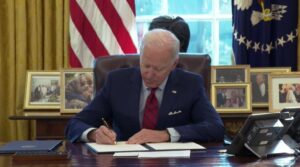
The Paris Climate Conundrum
By: Harry French
During the administration of the former president, Donald Trump, the United States had withdrawn from the Paris Climate Agreement. The official withdrawal from the agreement had occurred on November 4th, 2020 a year after the US began the process of withdrawing (BBC.) With the beginning of a new administration under president Joe Biden, the US once again chose to rejoin the Paris Climate Agreement. The process took 30 days to complete with the US finally rejoining the agreement on February 26th, 2021 (NBC.) The political nature of this topic is evident and can be polarizing. This article will attempt to avoid any potential political biases. To do so, it is important take a look at what the climate agreement is, and how the US will be generally impacted by being a member.
The best place to start would be at the beginning. The Paris Climate Agreement,formed on December 12th, 2015, was adopted by 162 parties and became active on November 4th, 2016 (UFCCC.) The main focus of the Paris Climate Agreement is to limit the rise of global temperatures. Specifically, preventing them from rising by 2 degrees Celsius. To achieve these goals the agreement calls for nations to operate on 5 year plans that take aggressive action to combat climate change. The focus of these plans is to limit greenhouse gas emissions until a level is achieved in which there is no longer a rise in concentration. All of these plans are operating on long term timescales. The implementation of the agreement requires changes to both the economic and social functions of a nation. The agreement does view climate change as a global issue and calls upon all member nations to implement these changes. And since the formation of the agreement 189 countries (out of the 195 in the world) have joined (UN.)
The United States Leaving
Now that we have a basic idea of what the agreement is aimed at doing, we should take a look at why the US decided to leave it. The main reason provided by the United States for its decision to leave the Paris Agreement was that participation in the agreement would undermine the US economy. The decision to leave the agreement had been applauded by some nations such as Russia and Saudi Arabia. It also had been criticized by many nations as well, including the European Union as a whole. The United States was the largest contributor of global carbon emissions when it moved to leave the agreement. Leaving became an issue of trust between the nations still in the agreement and the US (BBC.)
Rejoining the Agreement
With the new administration, the US has reversed its course and rejoined the Paris Climate Agreement. The Bide n administration has provided two goals it hopes to achieve with the move to rejoin. The US aims to have net-zero carbon emissions by 2050, an ambitious goal which would be a huge boost to the climate agreements goal of lowering temperatures. And a second, slightly broader goal of being the world leader in climate action (BBC.) Rejoining the agreement does put the US on the right track with respect to these two goals. The impacts on the United States economy are unknown at this time. As the years go on it will become more evident if the agreement will or will not have adverse effects on the US economy. One thing that is certain now, the rejoining of the Paris Climate Agreement has taken a step to rebuild trust with the member nations of the agreement. From a climate friendly standpoint, this is a step in the right direction.
n administration has provided two goals it hopes to achieve with the move to rejoin. The US aims to have net-zero carbon emissions by 2050, an ambitious goal which would be a huge boost to the climate agreements goal of lowering temperatures. And a second, slightly broader goal of being the world leader in climate action (BBC.) Rejoining the agreement does put the US on the right track with respect to these two goals. The impacts on the United States economy are unknown at this time. As the years go on it will become more evident if the agreement will or will not have adverse effects on the US economy. One thing that is certain now, the rejoining of the Paris Climate Agreement has taken a step to rebuild trust with the member nations of the agreement. From a climate friendly standpoint, this is a step in the right direction.
